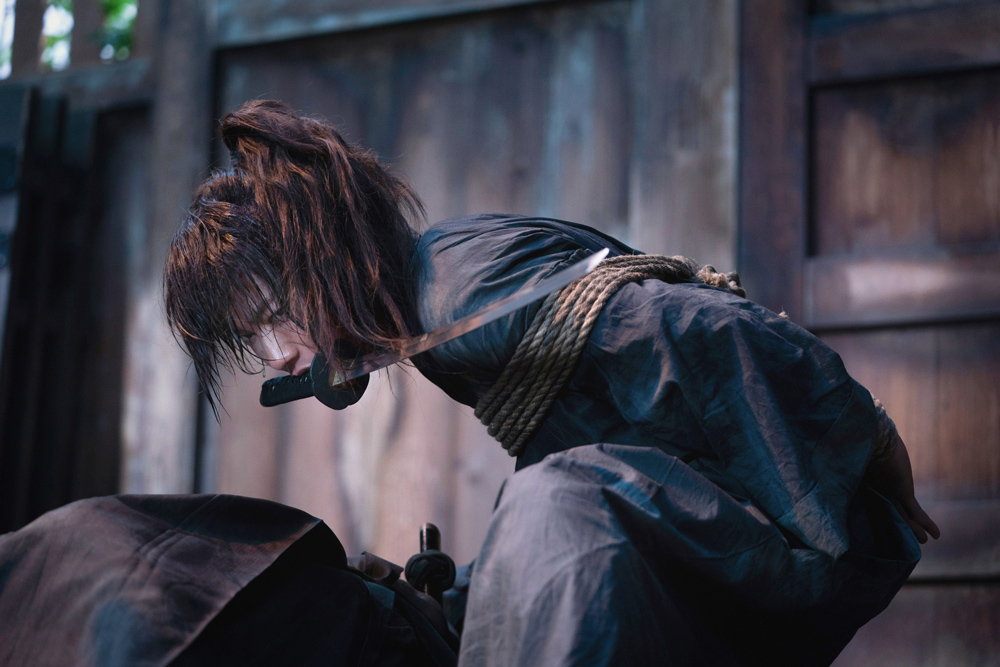!["Rurouni Kenshin Final Chapter The Beginning" Director Keishi Otomo What is necessary in manufacturing is an awareness of details [Director's Interview Vol.120]](https://cinemore.jp/images/04fd2b2b0f8d9d7cbafac456d7e7c5463d7513ba759951e3d03d1028452d5260.jpg)
"Rurouni Kenshin Final Chapter The Beginning" Director Keishi Otomo What is necessary in manufacturing is an awareness of details [Director's Interview Vol.120]
Sympathy for director Christopher Nolan
Q: It's a big deal that Director Otomo's style has spread to many people and become a format. That said, I imagine it must have been difficult to get to this point.
Otomo: Yes, there was... (bitter laugh). For example, if you borrow a costume for a drama, there are many cases where you can't get it dirty. But even a T-shirt bought just recently is completely different from one bought six months ago, right? The neck stretches, gets dirty, and I think costumes have a "chronology." It's very important for a production to have some room to think about things at that level, but the scale of Japanese movies means that they don't have that kind of room. So you have to think about how to use your head and move your hands.
I'll be shooting my next movie in the fall, and we're talking about what to do with the masks. I'm serious about making skin-colored masks. I think if you look at them from a distance, you won't look like you're wearing a mask (laughs). But director Christopher Nolan also loves these kinds of analog ideas.
Q: In " Dunkirk " (2017), you used backdrops (props with painted backgrounds, etc.).
Otomo: That's right. I think of directing as a kind of "philosophy." To tell the truth, what I think is necessary in making things is the "awareness" of capturing those details. If we can share the awareness of working towards that goal, each person can do what they like with their own methodology.

“Rurouni Kenshin Final Chapter The Beginning” © Nobuhiro Watsuki / Shueisha ©2020 Movie “Rurouni Kenshin: Final Chapter Part I - The Final/The Beginning” Production Committee
Q: Did you have that idea before you entered the industry?
Otomo: I wasn't aware of it, but that may have been the case. I didn't like shiny, unrealistic things or beautiful works that looked too contrived. When I was a child, I liked the works of director Gosha Hideo, which had a messy feel to them, including human emotions.
Reality is, so to speak, a "sense of life," and a sense of life is a trace of a person's life. So, for example, if the apron is still in good condition in a scene from everyday life, I think "that's strange," and I can't get into it. If it looks like an apron that was just bought, a different story starts from there. Even if it's fiction, if the hairstyle is strangely neat, in my case, that alone makes me feel distant.
Q: I understand that very well.
Otomo: I guess my roots are in documentaries. When I was shooting documentaries for NHK, I was assigned to Akita, so I often interviewed people in agriculture, forestry, and fisheries. Rather than people sitting in conference rooms doing something, I interviewed people who handle and grow living things such as food products and plants. On the other hand, my main subjects were people who "move" in search of them, such as hunters and matagi hunters. Even a single wrinkle on the face of such people conveys a sense of their lifestyle, or rather, their lives, directly. Of course, their way of life, but simply, they are excellent and attractive subjects. That's why, even if it's fiction, I want to shoot things that give me the same sense of lifestyle and rings of life that I felt at that time.
The importance of the “diary” that connects “The Final” and “The Beginning”

